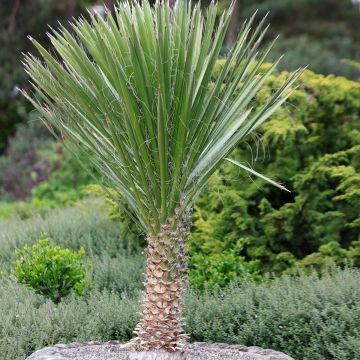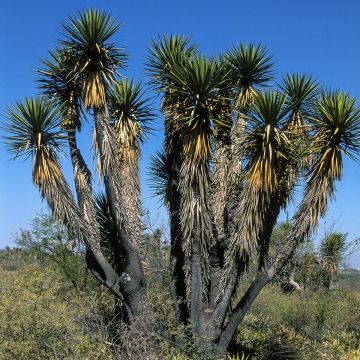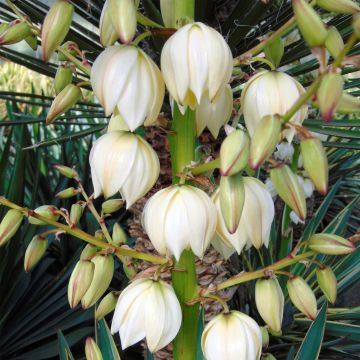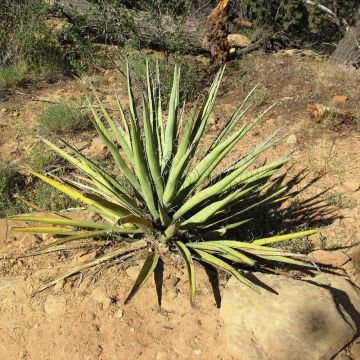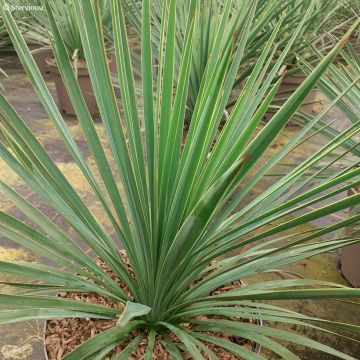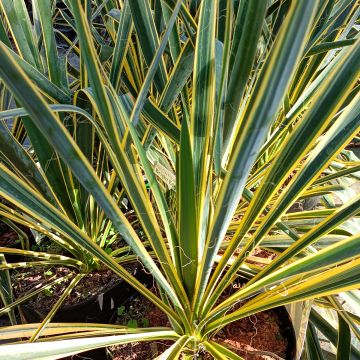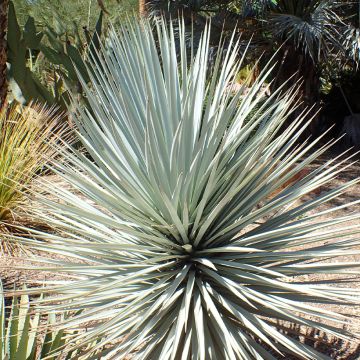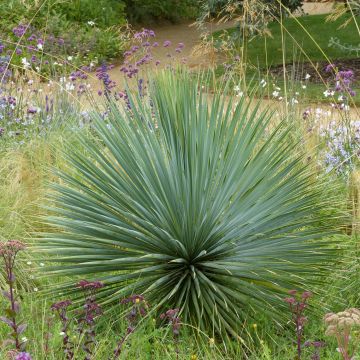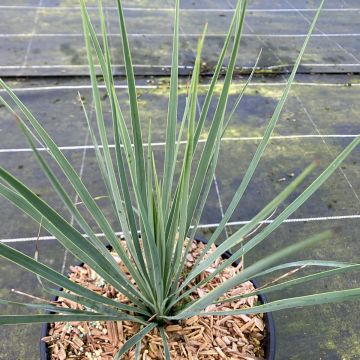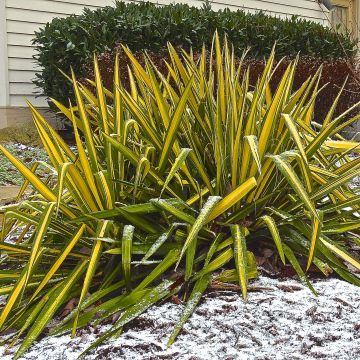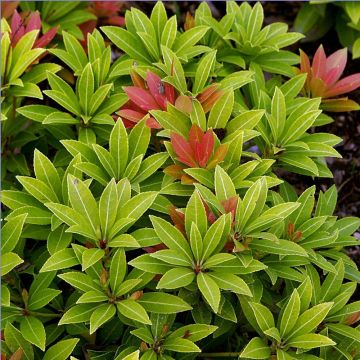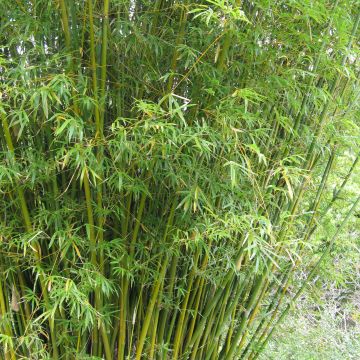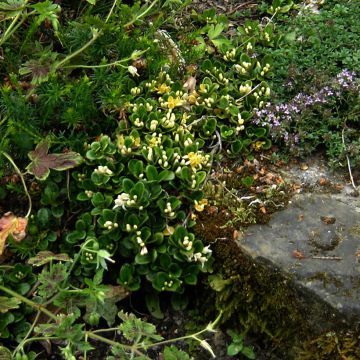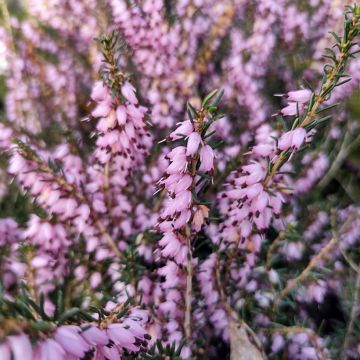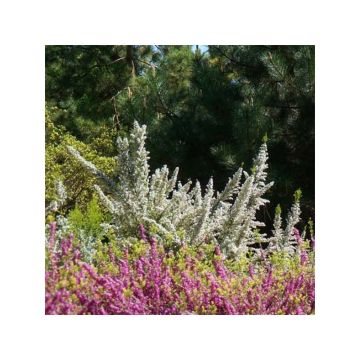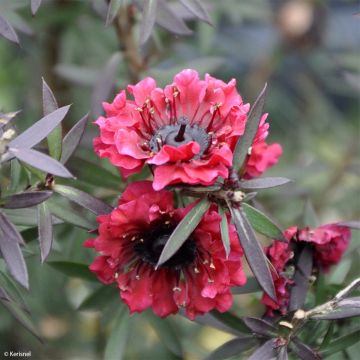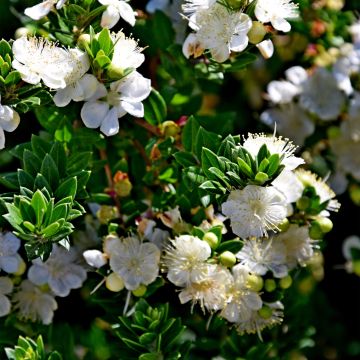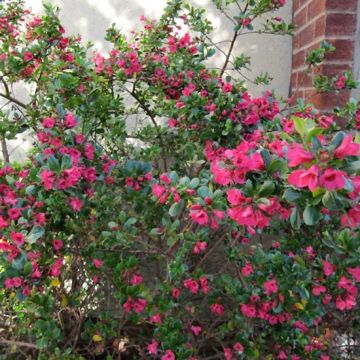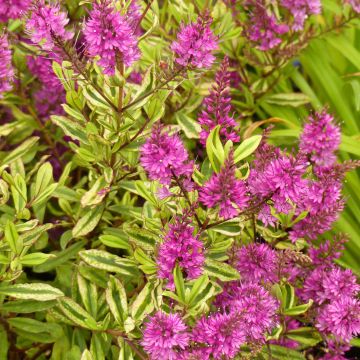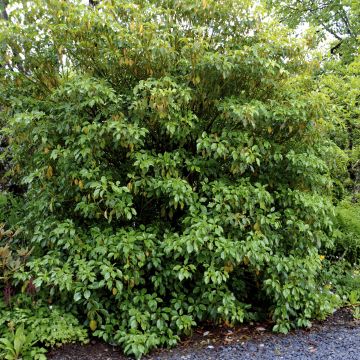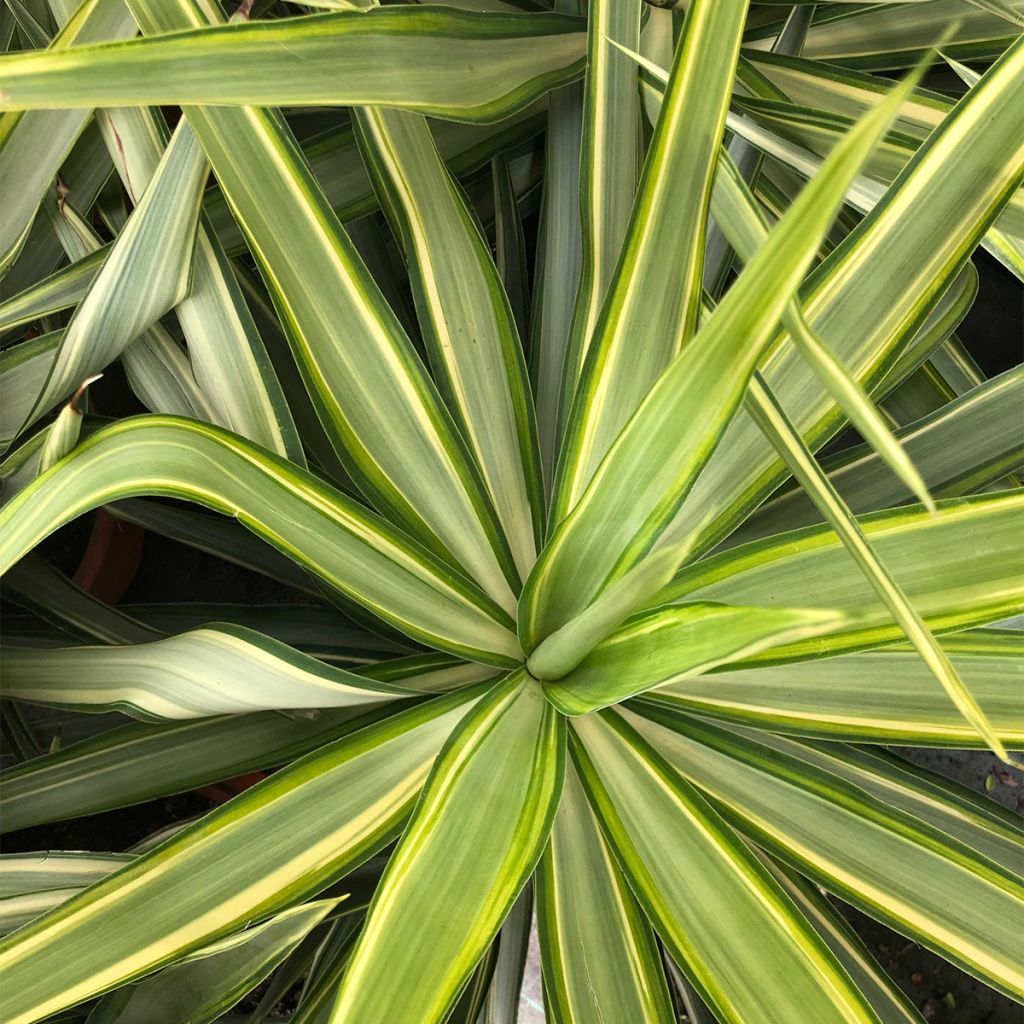

Yucca elephantipes Jewel - Yucca pied d'éléphant panaché
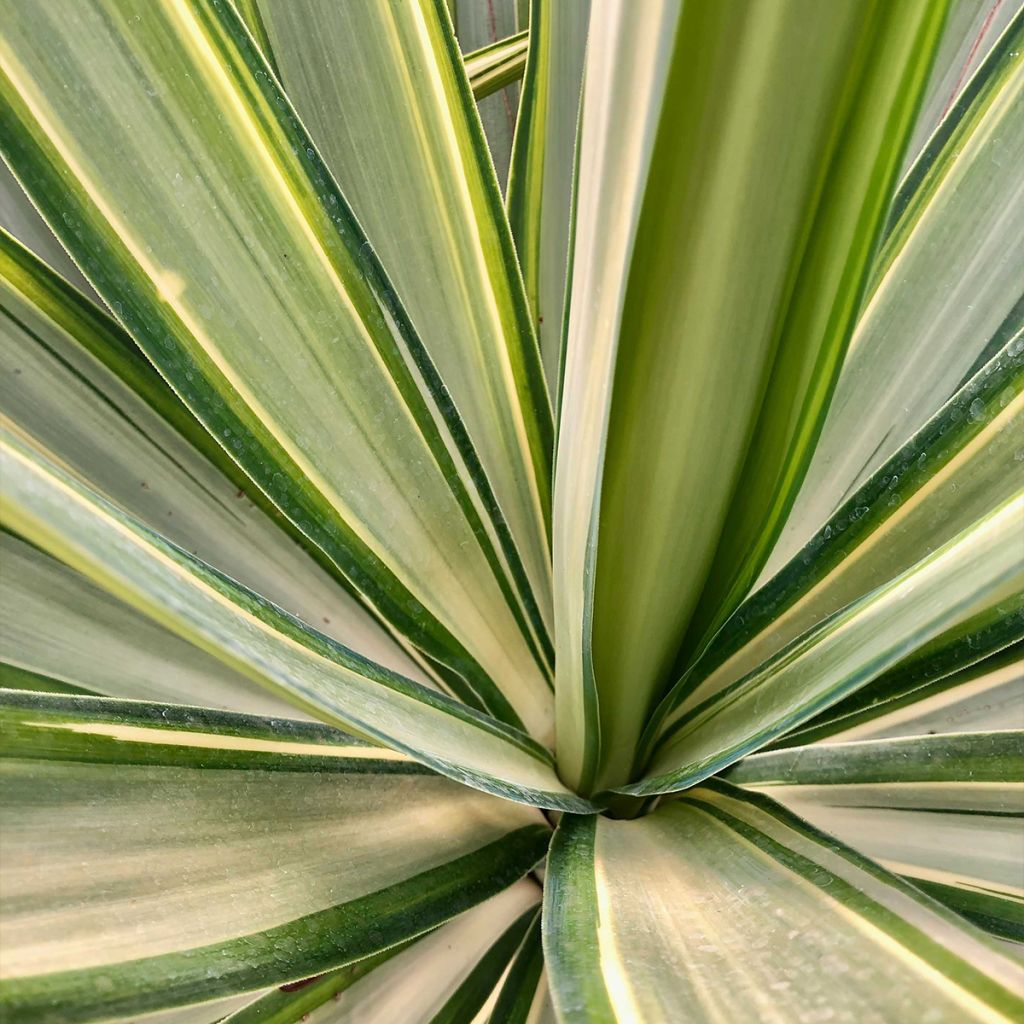

Yucca elephantipes Jewel - Yucca pied d'éléphant panaché
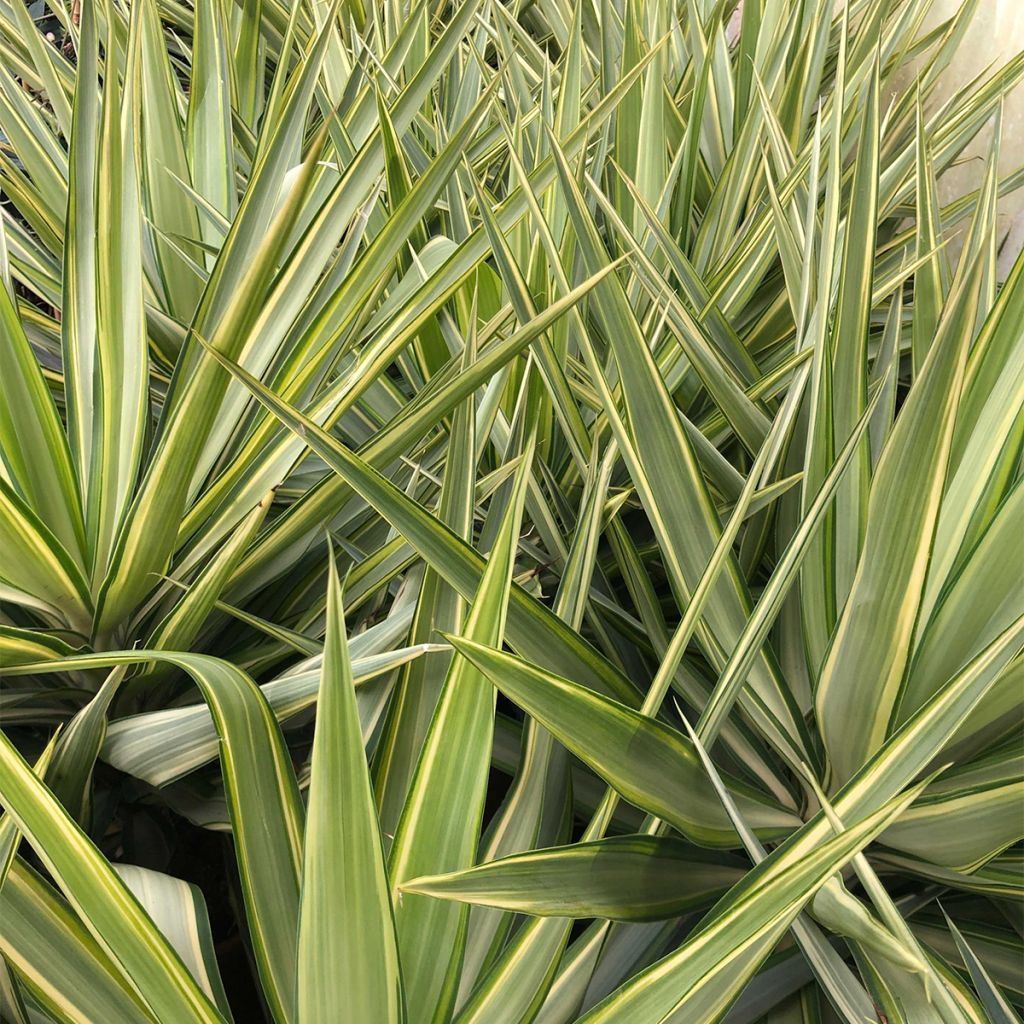

Yucca elephantipes Jewel - Yucca pied d'éléphant panaché
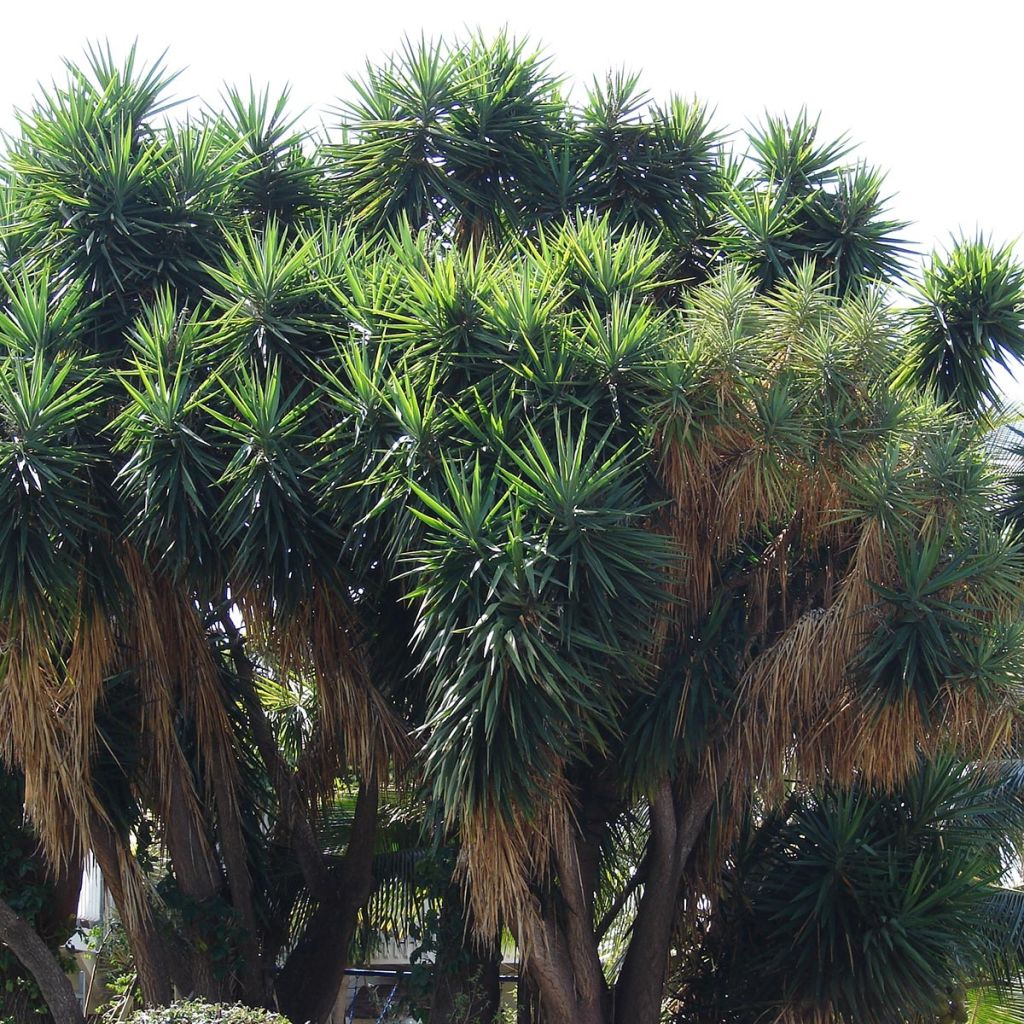

Yucca elephantipes Jewel - Yucca pied d'éléphant panaché
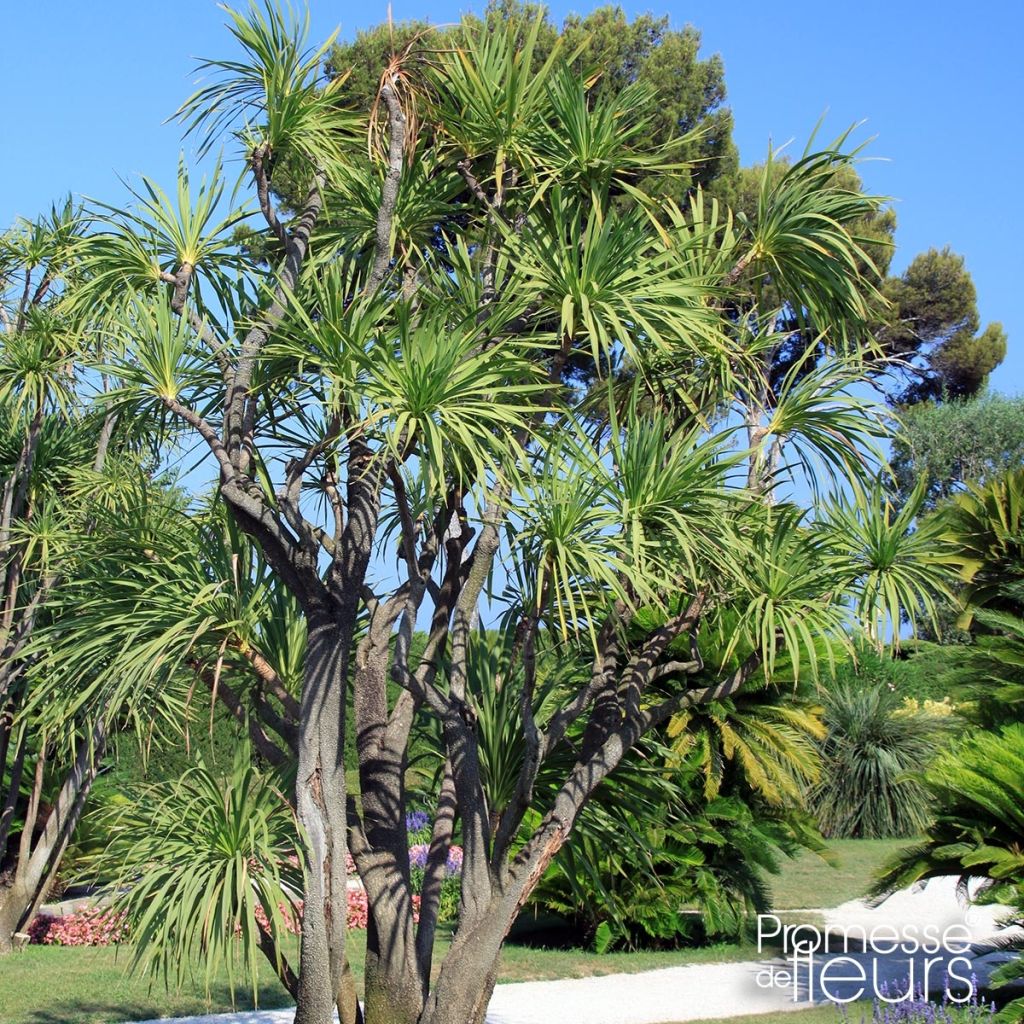

Yucca elephantipes Jewel - Yucca pied d'éléphant panaché
Yucca elephantipes Jewel
Yucca elephantipes Jewel
Spineless Yucca, Giant Yucca, Soft-Tip Yucca, Elephant Foot Yucca
This item cannot be shipped to the selected country
Delivery charge from €5.90
More information
Schedule delivery date,
and select date in basket
This plant carries a 24 months recovery warranty
More information
We guarantee the quality of our plants for a full growing cycle, and will replace at our expense any plant that fails to recover under normal climatic and planting conditions.
From €5.90 for pickup delivery and €6.90 for home delivery
Express home delivery from €8.90.
Does this plant fit my garden?
Set up your Plantfit profile →
Description
Yucca elephantipes Jewel, commonly known as Elephant Foot Yucca, stands out from the type species with its variegated pale yellow foliage, reduced vigour, and limited cold resistance. It is a ramified plant that is most often cultivated in pots to protect it from the cold in winter. It is appreciated for its exotic appearance and characteristic silhouette of a desert plant, with a widened base and crowned with clusters of rigid leaves. An aged specimen will flower in the form of upright panicles adorned with numerous green-white bell-shaped flowers. In open ground, Yucca elephantipes Jewel requires a sunny exposure, tolerates any well-drained soil, and is very resistant to drought.
Originating from Mexico and Guatemala, and not very hardy, Yucca elephantipes is most often cultivated as an indoor plant. It belongs to the agave family. The Jewel cultivar is even more decorative due to its yellow striped foliage. When young, this yucca forms a shaggy tuft. It then develops a massive false trunk, widened at its base, with a greyish colour, which eventually separates into several branches. In its natural habitat, the plant slowly reaches a height of 6 m (20 ft) and a width of 3 m (10 ft). In our temperate climates, its dimensions will be more modest, and it will not exceed 2 m (7 ft) in height and 1 m (3 ft) in width if grown in a container. The foliage, which develops at the end of the "trunk" and each of its branches, persists throughout the year. It is made up of multiple rough and rigid linear leaves, measuring 60 to 80 cm (24 to 32 in) in length, with a margin adorned with small harmless spines. Their colour is a fairly dark green, more or less streaked with cream towards the centre, and green-yellow to cream-yellow towards the margins. If not cut, the dried leaf bases, remnants of old leaves, remain attached to the trunk and branches for several years. Flowering occurs in summer after several years of growth, signalling the death of the rosette, which will be replaced by another. Plants grown in pots rarely flower. The slightly fragrant flowers are white to greenish in colour, bell-shaped, and gathered in large leafy, branched, and upright panicles. The petals are edible, as are the young shoots, which can be consumed as vegetables.
Yucca elephantipes Jewel is a plant with original architecture and is easy to grow in a large pot. It can be moved from the terrace in summer to the veranda in winter and can perfectly decorate a very bright and not-too-heated room in winter. In regions free from frost, it is ideal for structuring a large rockery or for brilliantly occupying the centre of an exotic flower bed. It can be planted alone or paired with Puya caerulea, Agave americana, or even prickly pear cactus on an arid slope.
Report an error about the product description
Yucca elephantipes Jewel in pictures
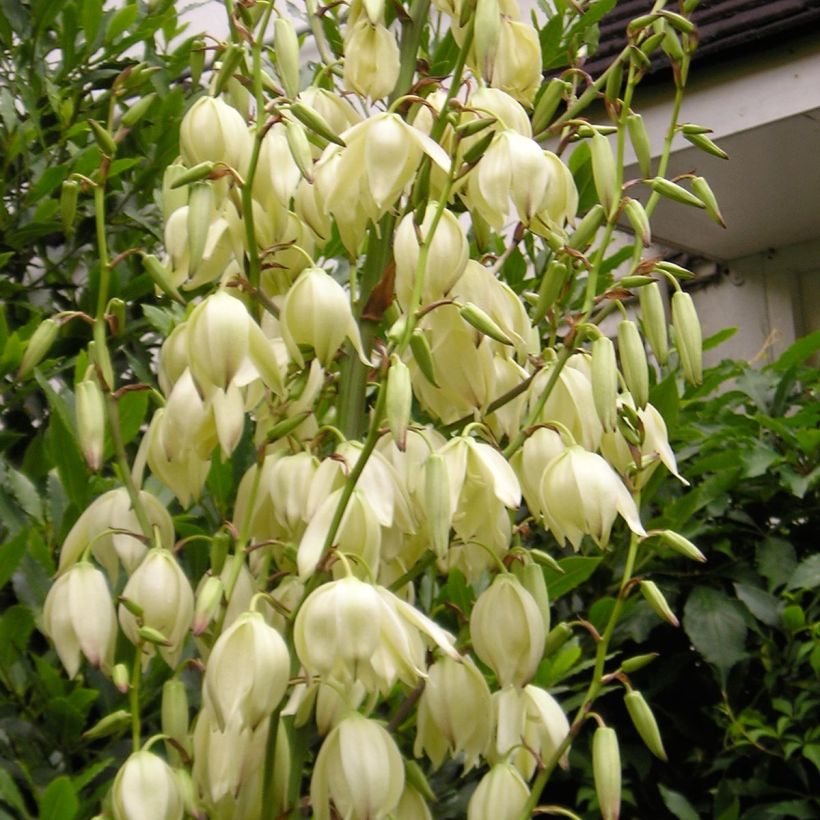

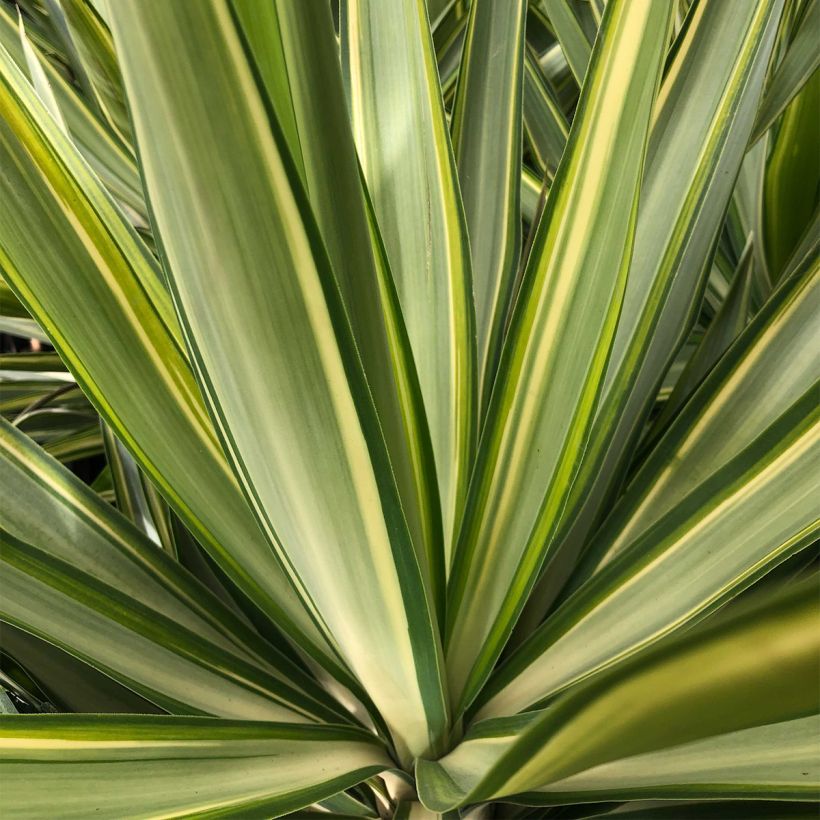

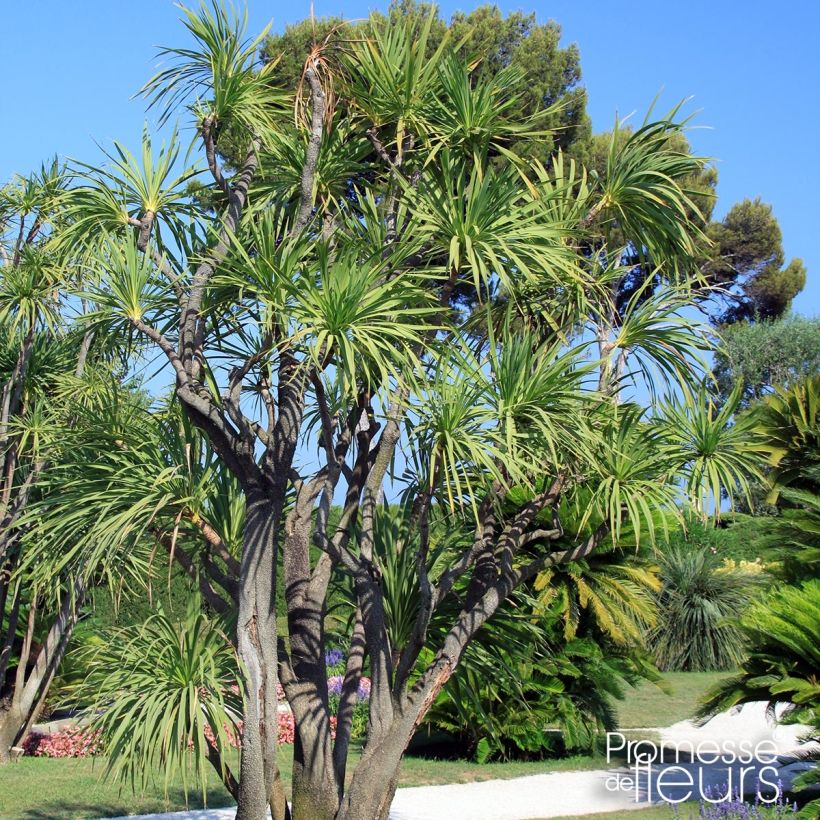

Plant habit
Flowering
Foliage
Botanical data
Yucca
elephantipes
Jewel
Agavaeae
Spineless Yucca, Giant Yucca, Soft-Tip Yucca, Elephant Foot Yucca
Central America
Other Yucca
Planting and care
Yucca elephantipes Jewel only thrives in open ground in the mildest regions: its foliage burns from -2 °C (28.4 °F), and the plant dies below -4 to -5 °C (24.8 to 23 °F), even if the soil is rather dry in winter.
In open ground: provide space, and a sunny to semi-shaded exposure. This plant will thrive in any well-drained soil that does not retain water, and even poor, acidic, neutral or calcareous soil.
In a pot or container: this yucca is a very resistant green plant, which can easily spend the winter on the veranda or in a bright and not-too-heated room (15 to 18 °C (59 to 64.4 °F)). Indoors, it usually develops 2 trunks and rarely exceeds 1.5 m (5 ft) in height. Choose a large pot, perforated at the bottom and equipped with a layer of clay balls or potsherds that will facilitate water drainage.
Use a mixture of potting soil, fine garden soil and coarse sand. Water every 10 days in winter and twice a week in summer. Allow the root ball to dry well between waterings as the roots of this yucca are sensitive to excess humidity. From spring to summer, every 15 days, apply diluted green plant fertiliser in the water. Repot your yucca every 2 to 4 years, in a slightly larger pot, at the end of winter. Take it out on the terrace, balcony or garden in May-June, first in partial shade for 2 to 3 weeks, then place it in the sun. In September, place it back in partial shade before bringing it indoors to protect it from the cold at the end of September.
Planting period
Intended location
Care
-
, onOrder confirmed
Reply from on Promesse de fleurs
Evergreen shrubs
Haven't found what you were looking for?
Hardiness is the lowest winter temperature a plant can endure without suffering serious damage or even dying. However, hardiness is affected by location (a sheltered area, such as a patio), protection (winter cover) and soil type (hardiness is improved by well-drained soil).

Photo Sharing Terms & Conditions
In order to encourage gardeners to interact and share their experiences, Promesse de fleurs offers various media enabling content to be uploaded onto its Site - in particular via the ‘Photo sharing’ module.
The User agrees to refrain from:
- Posting any content that is illegal, prejudicial, insulting, racist, inciteful to hatred, revisionist, contrary to public decency, that infringes on privacy or on the privacy rights of third parties, in particular the publicity rights of persons and goods, intellectual property rights, or the right to privacy.
- Submitting content on behalf of a third party;
- Impersonate the identity of a third party and/or publish any personal information about a third party;
In general, the User undertakes to refrain from any unethical behaviour.
All Content (in particular text, comments, files, images, photos, videos, creative works, etc.), which may be subject to property or intellectual property rights, image or other private rights, shall remain the property of the User, subject to the limited rights granted by the terms of the licence granted by Promesse de fleurs as stated below. Users are at liberty to publish or not to publish such Content on the Site, notably via the ‘Photo Sharing’ facility, and accept that this Content shall be made public and freely accessible, notably on the Internet.
Users further acknowledge, undertake to have ,and guarantee that they hold all necessary rights and permissions to publish such material on the Site, in particular with regard to the legislation in force pertaining to any privacy, property, intellectual property, image, or contractual rights, or rights of any other nature. By publishing such Content on the Site, Users acknowledge accepting full liability as publishers of the Content within the meaning of the law, and grant Promesse de fleurs, free of charge, an inclusive, worldwide licence for the said Content for the entire duration of its publication, including all reproduction, representation, up/downloading, displaying, performing, transmission, and storage rights.
Users also grant permission for their name to be linked to the Content and accept that this link may not always be made available.
By engaging in posting material, Users consent to their Content becoming automatically accessible on the Internet, in particular on other sites and/or blogs and/or web pages of the Promesse de fleurs site, including in particular social pages and the Promesse de fleurs catalogue.
Users may secure the removal of entrusted content free of charge by issuing a simple request via our contact form.
The flowering period indicated on our website applies to countries and regions located in USDA zone 8 (France, the United Kingdom, Ireland, the Netherlands, etc.)
It will vary according to where you live:
- In zones 9 to 10 (Italy, Spain, Greece, etc.), flowering will occur about 2 to 4 weeks earlier.
- In zones 6 to 7 (Germany, Poland, Slovenia, and lower mountainous regions), flowering will be delayed by 2 to 3 weeks.
- In zone 5 (Central Europe, Scandinavia), blooming will be delayed by 3 to 5 weeks.
In temperate climates, pruning of spring-flowering shrubs (forsythia, spireas, etc.) should be done just after flowering.
Pruning of summer-flowering shrubs (Indian Lilac, Perovskia, etc.) can be done in winter or spring.
In cold regions as well as with frost-sensitive plants, avoid pruning too early when severe frosts may still occur.
The planting period indicated on our website applies to countries and regions located in USDA zone 8 (France, United Kingdom, Ireland, Netherlands).
It will vary according to where you live:
- In Mediterranean zones (Marseille, Madrid, Milan, etc.), autumn and winter are the best planting periods.
- In continental zones (Strasbourg, Munich, Vienna, etc.), delay planting by 2 to 3 weeks in spring and bring it forward by 2 to 4 weeks in autumn.
- In mountainous regions (the Alps, Pyrenees, Carpathians, etc.), it is best to plant in late spring (May-June) or late summer (August-September).
The harvesting period indicated on our website applies to countries and regions in USDA zone 8 (France, England, Ireland, the Netherlands).
In colder areas (Scandinavia, Poland, Austria...) fruit and vegetable harvests are likely to be delayed by 3-4 weeks.
In warmer areas (Italy, Spain, Greece, etc.), harvesting will probably take place earlier, depending on weather conditions.
The sowing periods indicated on our website apply to countries and regions within USDA Zone 8 (France, UK, Ireland, Netherlands).
In colder areas (Scandinavia, Poland, Austria...), delay any outdoor sowing by 3-4 weeks, or sow under glass.
In warmer climes (Italy, Spain, Greece, etc.), bring outdoor sowing forward by a few weeks.

































